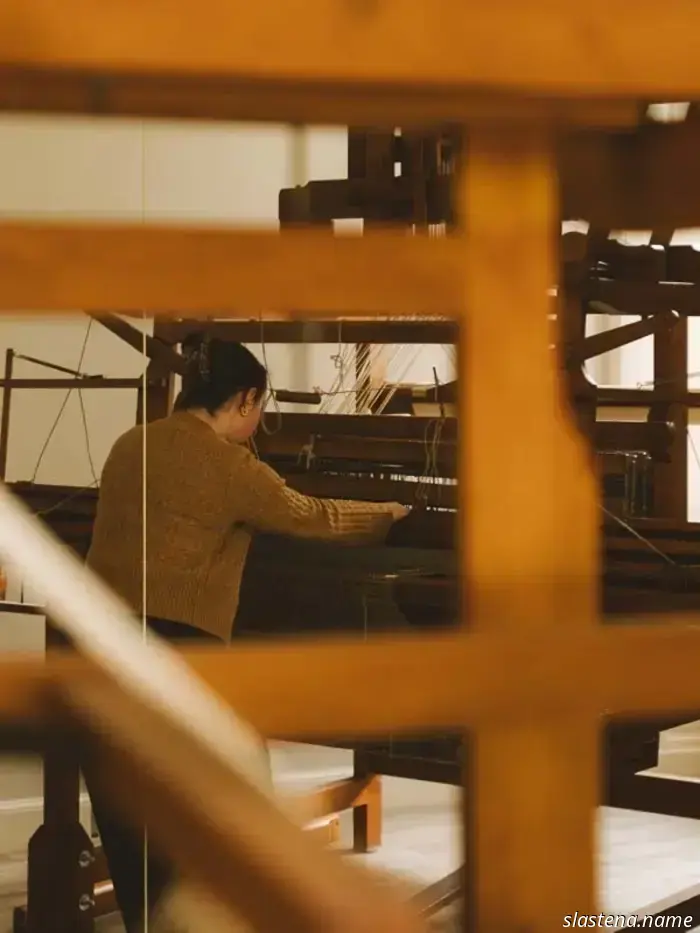
A Tour of Araminta Campbell’s Studio: Scotland’s Premium Tartan and Tweed Journey - Bake from Scratch
Photo by Joann Pai
Guests at the 100 Princes Street Hotel in Edinburgh will notice Araminta Campbell’s custom tartans integrated into the decor. In this magazine, we delve into the story behind this collaboration, and here we explore her atelier along with the heritage of tartan, tweed, and plaid.
________________________________________________________________________
Photo by Joann Pai
During their stay at the 100 Princes Street Hotel, guests will see items from the esteemed Scottish luxury brand Araminta Campbell’s collaborative collection woven into the furnishings.
Nestled just outside the hustle and bustle of downtown Edinburgh is the Araminta Campbell Atelier, a stately building that evokes images of lively ballrooms, the sounds of harp and violin, and the crunch of gravel under horse-drawn carriages. Originally part of the grand Hopetoun Estate near South Queensferry, this baronial-style farmhouse was constructed in 1822. Its slated roofs, crenelated parapets, angular turrets, and pointed windows showcase distinctive Scottish architecture—an inviting blend of comfort and grandeur.
Founded in 2016 by Araminta Birse-Stewart, the brand draws inspiration from the tartans of her youth. She turned to weaving in university to capture the beauty of Scotland through her “woven artworks” and storytelling through thread. Rooted in the landscapes and traditions of Scotland, the atelier creates beautiful handwoven textiles that showcase the talents and craftsmanship of local artisans.
Photo by Joann Pai
Araminta envisioned a dedicated space for visitors from the beginning. Initially, she showcased her work at craft fairs, but soon realized they could not convey the depth of her craftsmanship or the narratives behind her creations. She started welcoming visitors to her studio in Leith and aspired to have a rural location connected to nature yet easily accessible—a hidden treasure that feels exclusive yet approachable.
“Today, the atelier serves as both a destination and the core of the brand, embodying [my] mission to spotlight the craft of handweaving. . . . It has been thoughtfully transformed into a space that honors the building's heritage while providing a haven for contemporary craftsmanship,” Araminta elaborates.
Araminta collaborated closely with the Tollman family—the founders of the Red Carnation Hotel brand—and the hotel's interior designer to create five unique tartans that embody their heritage and vision. Bold green, navy, and red threads illustrate various aspects of their narrative.
“For instance, the Lourie Tartan, named after Mrs. Tollman's maiden name, joyfully celebrates . . . embodying the warm and generous spirit found in every Red Carnation property. The Tollman Tartan, created in honor of the family patriarch, features rich, deep colors of green, blue, and red, with fine checks of light blue symbolizing clarity, strength, and steadfast leadership.”
Photo by Joann Pai
The experience includes a luxury shopping visit to the atelier, a behind-the-scenes glimpse of the weaving process, and an opportunity to meet Araminta. Each piece is crafted using time-honored loom techniques and British alpaca. She employs ancient plant-dyeing practices to achieve colors that feel both current and timeless. Moreover, you can commission a bespoke, heirloom-quality design unlike any other in the world.
You don’t need to have Scottish heritage, Araminta assures. “We are dedicated to creating something meaningful for you. Our approach is inclusive and welcoming, and we love when individuals come to us wishing to narrate their own story through textile design—something that can be cherished for generations.”
Photo by Joann Pai
Tartan, Tweed, and Plaid: What’s the Distinction?
In their most fundamental sense, tweed refers to a fabric, plaid to a garment, and tartan to a pattern. Let’s delve deeper into the distinctions.
Tweed, which has its origins in both Scotland and Ireland, is the easiest to define, as its meaning has remained largely unchanged for centuries. Traditionally, this coarse, woven fabric was made from wool and was commonly associated with "the working man" owing to its durability and warmth. This practical textile is typically woven in a twill or herringbone pattern, often featuring subdued earth tones inspired by the natural landscapes of Scotland and Ireland.
Focusing more specifically, both tartan and plaid have their roots in Scotland. Tartan is a pattern characterized by intersecting horizontal and vertical bands in various colors. Typically, tartans maintain a consistent pattern of stripes running both vertically and horizontally, forming overlapping square grids, or setts. Certain tartans are commonly linked to specific clans, having originated in more remote areas as a standard design from a local weaver using dyes sourced from local vegetation. These patterns were utilized in a range of garments, ultimately becoming synonymous with various regional clans across Scotland.
The term plaid has seen the most evolution since its inception. Originally, “plaid




Other articles
 Scottish Dictionary - Prepare from Beginning
Black Treacle—This is a by-product of the sugar molasses extraction process, resulting in a thick syrup that has a somewhat bitter flavor. The nearest equivalent in the United States is blackstrap molasses. Black Pudding—This is a variety of blood sausage that is traditionally prepared with pork blood, fat, and a grain filler like oats. It possesses a savory, nutty taste with a slight metallic undertone.
Scottish Dictionary - Prepare from Beginning
Black Treacle—This is a by-product of the sugar molasses extraction process, resulting in a thick syrup that has a somewhat bitter flavor. The nearest equivalent in the United States is blackstrap molasses. Black Pudding—This is a variety of blood sausage that is traditionally prepared with pork blood, fat, and a grain filler like oats. It possesses a savory, nutty taste with a slight metallic undertone.
 Shop The Issue: September/October 2025 - Bake from Scratch
Cookbook Corner: IT’S TIME TO BAKE COOKIES, BAKE FROM SCRATCH, 10TH ANNIVERSARY EDITION, THE SCOT’S KITCHEN, NEW SCOTTISH BAKING, THE BIG BOOK OF BREAD.
Shop The Issue: September/October 2025 - Bake from Scratch
Cookbook Corner: IT’S TIME TO BAKE COOKIES, BAKE FROM SCRATCH, 10TH ANNIVERSARY EDITION, THE SCOT’S KITCHEN, NEW SCOTTISH BAKING, THE BIG BOOK OF BREAD.
 Hot Toddy Bundt Cake - Recipe from Scratch
Recipe taken from The Hebridean Baker: My Scottish Island Kitchen by Coinneach MacLeod. Copyright © 2022. Published by Sourcebooks. Photographs © Susie Lowe. Hot Toddy Bundt Cake Serves 8 slices. There’s nothing quite like a comforting cup of hot toddy during a chilly winter evening, which inspired me to incorporate the delightful flavors of honey, lemon, and whisky into this recipe.
Hot Toddy Bundt Cake - Recipe from Scratch
Recipe taken from The Hebridean Baker: My Scottish Island Kitchen by Coinneach MacLeod. Copyright © 2022. Published by Sourcebooks. Photographs © Susie Lowe. Hot Toddy Bundt Cake Serves 8 slices. There’s nothing quite like a comforting cup of hot toddy during a chilly winter evening, which inspired me to incorporate the delightful flavors of honey, lemon, and whisky into this recipe.
A Tour of Araminta Campbell’s Studio: Scotland’s Premium Tartan and Tweed Journey - Bake from Scratch
During their stay at the 100 Princes Street Hotel, guests will notice elements from the collaborative collection of the Scottish luxury brand Araminta Campbell integrated into the décor.
